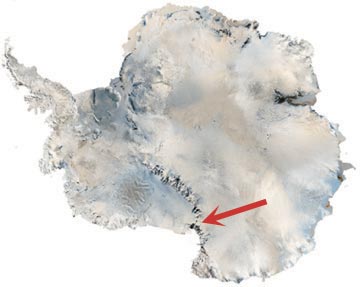October 12, 2004 to December 15, 2004


The goals of this project are to collect and develop high-resolution ice core records from the Dry Valleys region of Antarctica, and provide interpretations of interannual to decadal-scale climate variability during the last 2000 years (late Holocene). In particular, we seek to test hypotheses related to ocean/atmosphere teleconnections (e.g., El Niño Southern Oscillation, Antarctic Oscillation) that may be responsible for major late Holocene climate events such as the Little Ice Age in the Southern Hemisphere. We plan to collect intermediate-length ice cores (100-200m) at four sites along transects in Taylor Valley and Wright Valley. For more details, see the Project Description.
December 21, 2004
Well, I am back in Maine now, and the trip was a great success all around. In this last installment, I include pictures (some taken by Mike, some by me) from a field trip we took from McMurdo to the hut Robert Scott built at Cape Evans c.1910, two day trips we took to the Victoria Upper Glacier and the Blue Glacier to continue our research and the flight home on an LC-130H (Hercules), which is a very different and much smaller airplane than the C-17. As it was for the majority of our trip, the weather continued to be spectacular until we flew out on December 11. It was so nice, in fact, that we had to use a different runway than the one we landed at, because the "sea-ice" runway (where we landed) was getting too soft from melting. They shut it down two weeks ahead of schedule and moved to "Williams Field", which is a runway on the tongue of the Ross Ice Shelf. The ice is much thicker there and so can be used when the sea ice melts. Soon it will be warm enough for the icebreaker to arrive, but we will not be there to see it. It was a great season, and I hope I get a chance to return someday. The Dry Valleys is truly a spectacular place!
December 3, 2004
What a place! Our drilling sites in the Dry Valleys were even more beautiful this year than last year, if that's possible. Because Karl, Mike, Terry and I were on the Clark and Commonwealth glaciers for more than a month, this journal cannot include all of the things we did and saw, but I will try to give you an idea of our time on the ice.
December 9, 2004
Since returning to McMurdo, we have been cleaning and returning our gear from the field season and getting ready for a couple of day trips out to additional glaciers near the Clark and the Commonwealth. There we will dig more snowpits to see how the different glaciers have similar or contrasting chemistry in their snow. This will allow us to better interpret the ice cores we drilled this season. We are reaching the end of the season, and it has been a great time. I'll send another update after our daytrips and our trip back to Christchurch. Until then,
